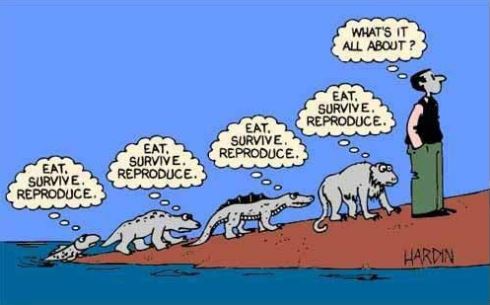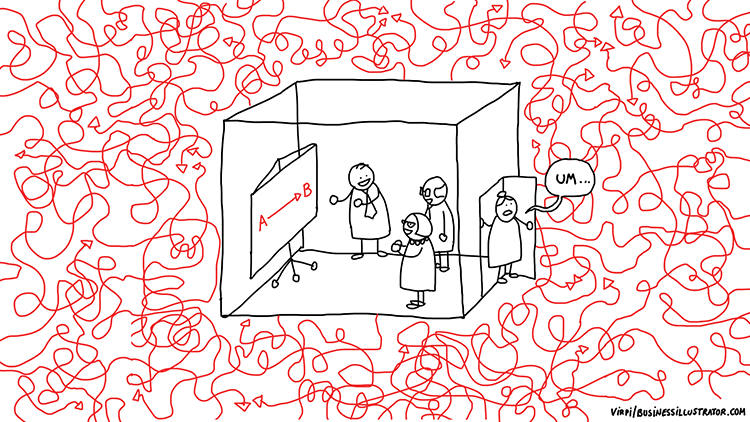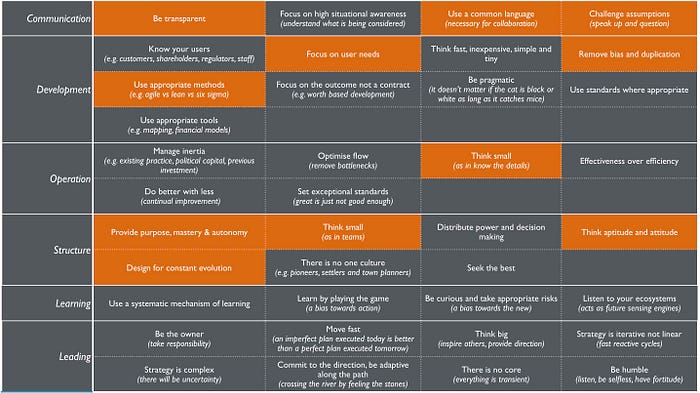Thinking fast and slow
It’s the title of a book written by Daniel Kahneman. Actually it’s a thesis on decision making and behavior when making decisions of an economic and social nature …
Daniel Kahneman worked for many years alongside his colleague Amos Tversky. They studied many heuristics. Daniel won the Nobel Prize in economics in 1992 and dedicated it to his friend Amos, who would have received it, but he passed away earlier.
Kahneman in his book talk about how people have two systems.
- The System 1 is intuitive, instantaneous and use shortcuts (I’ll comment about these shortcuts later) for operation. It works automatically, effortlessly and quickly, staying active continuously.
- The System 2 is a system rational, deliberative , which uses rules to assess the situation. It requires effort, paying attention, activating our mental capacities slowly.
Primitive man, to survive needed to be all day with system 1 activated, on alert for the dangers that could appear and compromise his life. Then, at the end of the day, he had time to listen and deliberate on how to hunt certain animals or how to find water in a better way; in that case he was using system 2. This allowed humans to survive in a very hostile environment.

In the actual world this has changed a lot, we generally do not have to face constant vital threats that can end our lives on a daily basis. But life puts us in another difficulties and pushes us to use System 2 more to survive in this new environment.
Having this clear helps us a lot to understand how our environment has changed, but do not forget that we are here for the essentials: to eat, survive and reproduce.
Biases, heuristics, or mental shortcuts
System 1 uses mental shortcuts that are also known as biases or heuristics.
How does this work? Well, the brain builds automatic guidelines on a daily basis that mean that we do not have to think, but we do things automatically.
Driving a car is an act that at first requires a lot of concentration and system 2 to understand everything we are doing, but after a while our brain learns how to do it and turns it into an almost automatic task performed by system 1.
This way of working is not in principle bad, but of course, when used in a perverse way it can be counterproductive. The manipulation of minds is something very old, there are many ways and techniques, to do it with good intentions and bad intentions.
But why are you telling me all this?
If you are a person outside an organization and you have to understand how it works, no in a superfluous way, but within a deep understanding, this exercise that I propose can be useful to you to find out which are the predominant doctrines in that organization.
You may need to know the doctrines of an environment for many reasons: to help with something, to deliver certain services or projects, to sell a product or to be part of that company in the future.
I have explained systems 1 and 2 and the building of mental shortcuts to try to understand how companies or organizations behave in more depth.
I am going to present some examples, but the reader should not limit himself to these examples but understand that each environment requires looking at it from different perspectives to try to draw conclusions about general behaviors. That is, I invite the reader to use System 2 more than System 1 in discovering details of the doctrines of a given context.
This proposal to cling to system 2 is fundamental due to another basic principle: complexity does not have to be simplified, it has to be understood and managed. Let’s not fall for this:

Systems 1 and 2 to identify the dominant doctrines in companies
In companies, when it comes to identifying doctrines, distinguishing behaviors or decisions made with system 1 and 2 is an interesting exercise.
This is the table of doctrines proposed by Simon Wardley:

How to investigate in depth a specific doctrine, for instance “use a common language”
The “use a common language” is essential and everyone understands it as something positive and useful when it is established. But what happens in organizations where this does not happen?
Organizations are born, grow, reproduce and die, as if they were a living organism. In this process, all of them build mental shortcuts to try to do automatically what was done consciously at first.
Simon Wardley says that evolution is the center of everything , and with this he proposes the PST model: Pioneers, settlers and town planners. This model proposes that we think about the attitude and aptitude of the people in the organization to carry out the activities that the organization requires at all times.

Daniel Kanehman’s system 1 and 2 model recognizes too that there is an evolution of the human being in which the human builds heuristics or shortcuts to be able to evolve and focus the energy of his system 2 on new things that lead him to be a “evolved human”.
Well, in a supposedly mature organization, in which there is not a good degree of “use a common language” there are many questions we can ask ourselves:
- Why has it happened that the organization has not developed a “use a common language”?
- What are the mental shortcuts that have been built in the different parts of the organization so that this does not happen?
- What other priorities have been addressed?
- Why haven’t the leaders of this organization understood or tried to promote the “use a common language”?
- At what critical point in the evolution of the organization would this have been a good thing to have established?
- The niches of the organization that use different languages, what aversion do they have to stop using “their language” in favor of a “common language”?
- How deep is the use of System 1 in the niches of the organization as far as language is concerned?
- Does the organization have people with the ability to break the status quo of the widespread use of system 1 and break with it to think and address a global need to use a common language?
So we can ask ourselves many questions about a specific organization and doctrine.
“This has always been done like this” sentence
You talk to someone in a department and you ask: why do you do this in this way, if it doesn’t make sense? And the answer is sometimes: “This has always been done this way.”
This is a good example of an organization that acts based on system 1, automatically, without thinking, without effort.
Closing
Investigating the prevailing doctrines in an organization or a company is something complex. Therefore, looking at this organization from many perspectives is something that can enrich our analysis.
For this reason, using the behavior model described in “Thinking fast and slow” by Daniel Kahneman, where it is recognized that in a person there is a system 1 and system 2, it can be an interesting alternative in some of the things that you analyze.
And remember: the complexity of reality does not have to be simplified, you have to try to understand it and manage it.